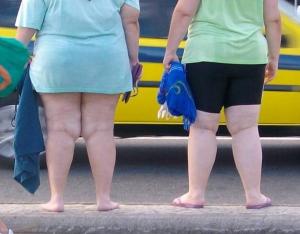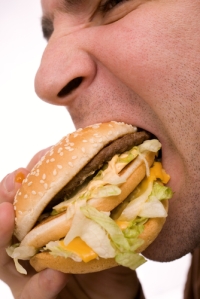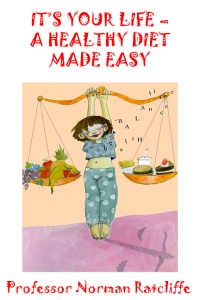NEWSFLASH!! McDonald’s has just announced that they are reducing the amount of antibiotics in their chicken nuggets. This says it all – an actual confession of the worst kind of additive present in their junk food. People have been feeding these chicken nuggets to their children for years and eating them too. DO NOT EAT THESE AWFUL PROCESSED FOODS AS THEY ARE HELPING TO FUEL THE RISE OF ANTIBIOTIC-RESISTANT BACTERIA THAT ARE THE GREATEST HEALTH THREAT IN THE 21ST CENTURY ACCORDING TO THE WORLD HEALTH ORGANISATION.
Introduction
Many people were pleased to learn that both McDonald’s and Coca Cola’s sales dropped significantly in the recent year. These two purveyors of junk food have sold their fat and sugar-laden products throughout the World to generations of gullible people. There have been no boundaries to the low levels to which they have stooped in order to hook their customers. Thus, McDonald’s gave free toys to bribe children while Coca Cola used green lorries to deliver their evil brews and pretend to care about the environment. Coco Cola has also jumped on the “Zero” bandwagon label to fool people into thinking that their “Zero” drinks can help weight loss. These two companies alone have significantly contributed to the obesity epidemic that is sweeping the World. For example in Brazil, as soon as the economy improved around 2008, McDonald’s and other junk food merchants opened numerous outlets in Rio de Janeiro so that the once ”beautiful people” now rival the USA and the UK in terms of their obesity rates and the size of their bulging waistlines.
Brainwashing and addiction
Yes, people have a free choice to choose what to eat, but when they are constantly exposed to advertising from giant hoardings, trains covered in logos, and enormous symbols at sporting events sponsored by McDonalds and Coca Cola then it is not surprising that they become brainwashed into buying junk foods. There is even evidence that high-fat/sugar food is addictive and that junk foods stimulate the brain’s reward system in the same way as drugs like cocaine.
Reduced sales
So what is happening now and are the reduced sales good news for the health of people throughout the World? Recently, sales of Coca Cola products have fallen in the USA, Mexico and Europe resulting in a profit decline of 25%. This has probably been due to a combination of factors including increased taxes on sugary soda in Mexico, several widely publicized lawsuits in the USA over undisclosed chemicals present in Coca Cola, and increased health awareness of younger people. With McDonald’s, the income shrunk last year by 15% and practically every month showed negative sales. The reasons for this reduction in sales are complex and involve young peoples’ disillusion with the food on sale, competition from other smaller companies, political and economic crises in Europe and Asia, concerns about food safety in China and, hopefully, an increasing awareness of the harm that the McDonalds high-fat foods can have on health.
Companies responses to reduced sales
- Coca Cola’s response to reduced sales shows a hint of desperation as people turn away from its traditional products. Not content with drowning Nations in chemical-laden and nutritionally defunct drinks for decades, it has now turned its attention to the dairy industry by producing highly processed milk called “Fairlife”. According to Coca Cola, Fairlife contains no lactose and has 50% more protein, 30% more calcium but 50% less sugar than normal milk. The sugar and lactose are removed by a special filtration system which also concentrates the protein and calcium. There is also a chocolate version of Fairlife which is fat-free (?) and with reduced sugar. It sounds too good to be true and, unfortunately, probably is.
Advantages of Fairlife
i. Low fat
ii. Free of lactose Fairlife is therefore of interest to overweight and lactose-intolerant people but weight watchers beware as it contains artificial sweeteners which may stimulate the appetite.
Disadvantages of Fairlife
i. One disadvantage is that it will probably cost twice as much as ordinary milk.
ii. The main disadvantage, however, is that Fairlife has only been given a score of 6 out of 10 by the Environmental Working Group (EWG, ewg.org. see: Toxic chemicals in Fairlife milk EWG) on the basis of nutrition, ingredients and processing concerns. EWG is a USA non-profit organisation whose mission is “to use the power of public information to protect public health and the environment.” The highest concern of the EWG was over the ingredients which include 6 additives: bisphenol A from plastic liners, potassium phosphates, artificial flavour, natural flavour, sucralose, acesulphame potassium and carrageenan. Concerns were also expressed over the amount of processing that was used in the production of Fairlife since the more the processing the higher the use of artificial additives.
iii. The final disadvantage of Fairlife is the fact that it is produced by Coca Cola whose reputation has been undermined by lawsuits concerned with undisclosed chemicals used in its products such as phosphoric acid, artificial flavour and chemical preservative.
Conclusion on Fairlife
The relatively high price, content of artificial sweeteners and undisclosed flavourings should make most people chose natural skimmed cow’s milk. For the price of Fairlife, it is possible to buy organic cow’s milk that is free of all additives, including the antibiotics often used in cow husbandry in the USA.
- McDonald’s response to falling sales so far, in contrast to Coca Cola, does not seem to have resulted in diversification into other relatively healthy food products like milk. Instead, the CEO of McDonald’s, Don Thompson, has resigned and a $100 milion cost-cutting exercise is underway at company headquarters. Many areas of McDonald’s operation will need the attention of the new CEO including:-
i. Simplifying the menu so that service is improved. At the moment, the menu is so complex that customers are confused and kitchen staff take too long to respond to orders. This has particularly affected drive-thru customers who have gone to other more efficient restaurants.
ii. Some of the McDonalds prices at the higher end of the menu have become too expensive and will need to come down.
iii. Updating marketing and technology to create a better image and facilitate ordering, payment and mobile offerings.
iv. Probably the biggest challenge is to change the image of McDonald’s and rebrand from cheap fatty food and burgers to fresh food to appeal to more health aware customers.
This latter rebranding will take some time to implement as many people would never be seen dead in a McDonald’s restaurant except to use the WC. Certainly, the complexity of the menus makes it difficult to find healthy alternatives so that simplification and introduction of healthy alternatives would be welcomed.
In conclusion, falling sales are probably good news for McDonald’s customers if the company responds by introducing healthy options. In contrast, the response of Coca Cola to meddle with one of the most nutritious and relatively cheap foods available is worrying due to the extremely poor track record of this global giant.
It’s Your Life: End the confusion from inconsistent health advice



